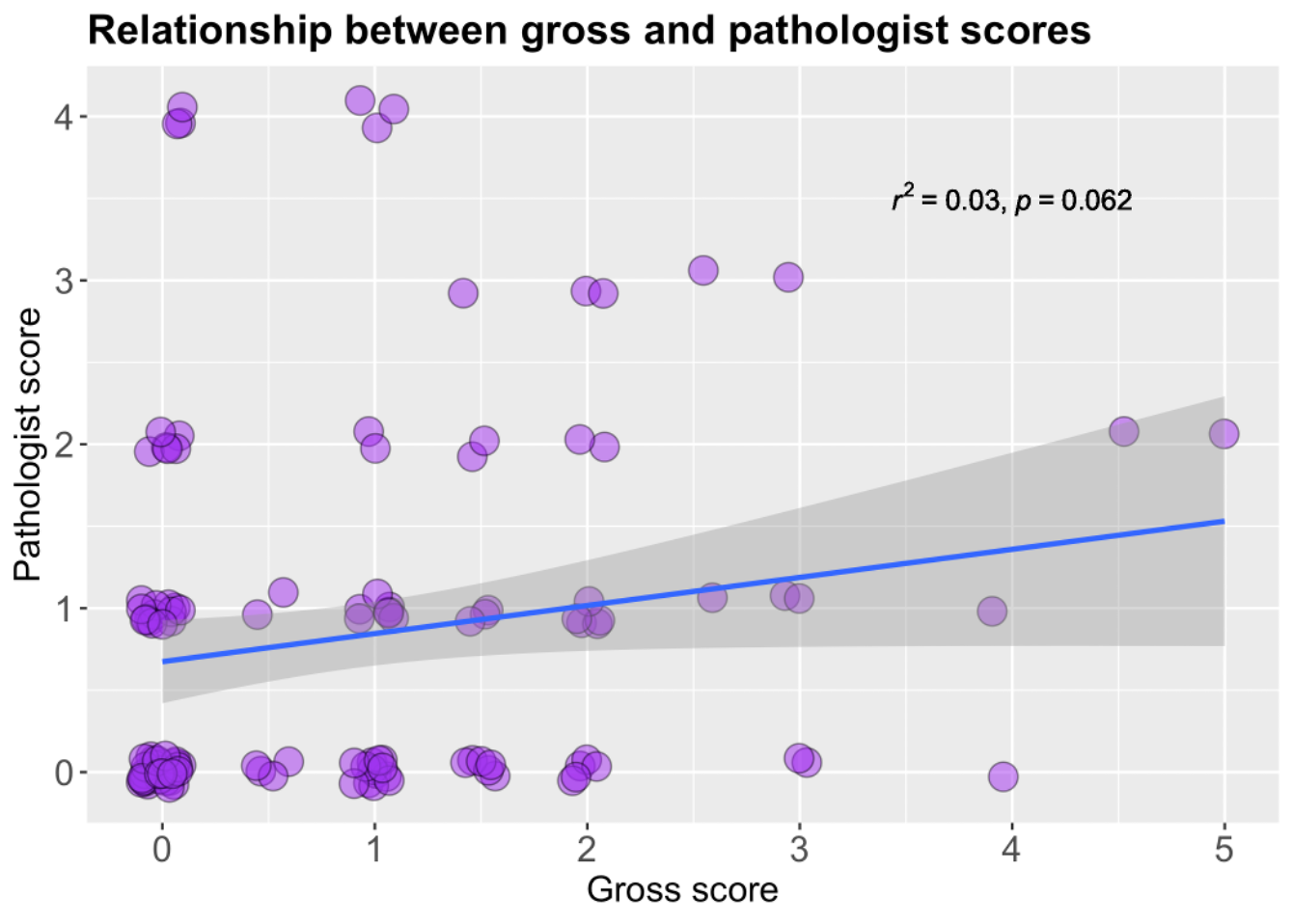The Ontario Anatomic Kidney Score (OAKS) : Quantitative Macroscopic Assessment versus Histological Grading in Pre-transplant Evaluation of Donor Kidneys
1Urology, Western University, London, ON, Canada, 2Undergraduate Medical Education, Western University, Schulich School of Medicine & Dentistry, London, ON, Canada, 3Division of Urology, Department of Surgery, Schulich School of Medicine & Dentistry, Western University, London, ON, Canada, 4Division of Nephrology, Department of Internal Medicine, Schulich School of Medicine & Dentistry, Western University, London, ON, Canada
Meeting: 2022 American Transplant Congress
Abstract number: 396
Keywords: Biopsy, Graft acceptance, Kidney transplantation, Outcome
Topic: Clinical Science » Kidney » 32 - Kidney Deceased Donor Selection
Session Information
Session Name: Kidney Deceased Donor Selection II
Session Type: Rapid Fire Oral Abstract
Date: Tuesday, June 7, 2022
Session Time: 3:30pm-5:00pm
 Presentation Time: 4:20pm-4:30pm
Presentation Time: 4:20pm-4:30pm
Location: Hynes Ballroom C
*Purpose: Quantitative gross assessment of a kidney has not been used to influence the evaluation to utilize a kidney for transplantation. The Ontario Anatomic Kidney Score (OAKS) is a novel grading system utilized to standardize objective gross description of the donor kidney that allows communication between clinicians and centres. We hypothesize that the OAKS score can independently predict renal graft performance and corresponds with KDPI and histologic assessments.
*Methods: Between 2018-2020, one hundred forty-seven patients underwent renal transplant (n=147). Prospective macroscopic examination of the kidney was determined via OAKS by set criteria evaluating the aortic vessels, anomaly (cysts/scars), sticky fat, and tactile assessment of structural rigidity (each 2). Furthermore, a renal implantation core biopsy was performed and histologically graded by Remuzzi score (RS). Neither OAKS nor RS was used to determine donor utility. Pre-operative donor score was also obtained using KDPI. GFR and graft function were tracked post-operatively for one year, with outcome failure defined by graft loss or GFR<30.
*Results: There was a good correlation between the OAKS and RS, with an R-squared value of 0.03. Importantly, OAKS had better correlation with KDPI vs. RS. Independently, the OAKS was effective at predicting poor renal allograft outcomes with an odds ratio of 1.51 for every 1-point change in total score (p=0.024). In contrast, RS was also effective at predicting at renal allograft outcomes with an odds ratio of 1.53 for every one-point change in total score (p=0.013). When used as an adjunct to the RS, the OAKS independently increased predictability of outcome failure to 60% (p=0.012).
*Conclusions: The novel OAKS can be used to predict graft outcomes and correlates well with histologic assessment and KDPI scores. We will evaluate the replicability of the OAKS in other surgeons’ hands and a develop composite score to better predict functional donor capacity in the future.
$$MISSING OR BAD IMAGE SPECIFICATION {B5C8E3F7-7D3F-4BAA-AC87-57D9896F0C53}$$
To cite this abstract in AMA style:
Offerni JMello, Matty D, Abed H, Roshanov P, Sener A, Luke P. The Ontario Anatomic Kidney Score (OAKS) : Quantitative Macroscopic Assessment versus Histological Grading in Pre-transplant Evaluation of Donor Kidneys [abstract]. Am J Transplant. 2022; 22 (suppl 3). https://atcmeetingabstracts.com/abstract/the-ontario-anatomic-kidney-score-oaks-quantitative-macroscopic-assessment-versus-histological-grading-in-pre-transplant-evaluation-of-donor-kidneys/. Accessed December 11, 2025.« Back to 2022 American Transplant Congress

